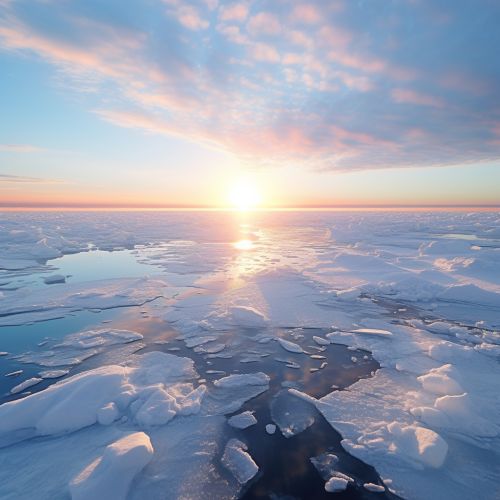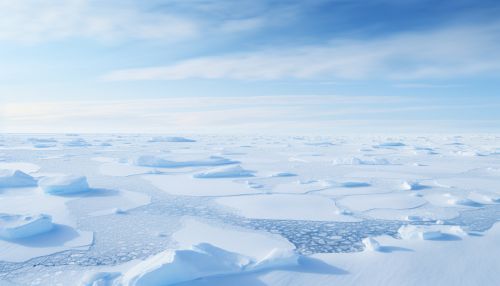Brine rejection
Overview
Brine rejection is a process that occurs during the formation of sea ice, where salt is expelled from the freezing water, increasing the salinity of the surrounding ocean water. This process has significant implications for ocean circulation patterns, marine life, and the global climate system.
Process
The process of brine rejection begins when surface water in the ocean begins to freeze. As the temperature drops, ice crystals start to form in the water. These ice crystals are made up of pure water, as the salt in the sea water does not freeze at the same temperature. As a result, the remaining unfrozen water becomes increasingly saline, a phenomenon known as brine enrichment.
As the freezing process continues, pockets of this highly saline water, or brine, are trapped within the ice. However, due to the high salinity, these pockets of brine remain in a liquid state, even at temperatures below the freezing point of pure water. Over time, these pockets of brine begin to drain out of the ice, a process known as brine rejection.


Effects on Ocean Circulation
Brine rejection has a significant impact on ocean circulation patterns. The expelled brine increases the salinity and density of the surrounding sea water. This denser water then sinks, driving the process of thermohaline circulation. This circulation, often referred to as the global ocean conveyor belt, plays a crucial role in distributing heat around the globe and influencing climate.
Impact on Marine Life
The increase in salinity caused by brine rejection can have a significant impact on marine life. High salinity levels can be harmful to many marine organisms, particularly those that are not adapted to such conditions. However, the process also creates pockets of highly saline water that can serve as unique habitats for certain species of bacteria and other microorganisms.
Role in Climate System
Brine rejection plays a crucial role in the global climate system. By driving thermohaline circulation, it helps to regulate the Earth's temperature. Additionally, the formation of sea ice and the associated process of brine rejection play a key role in the Earth's albedo – the amount of solar radiation reflected back into space. Sea ice has a high albedo, meaning it reflects a large portion of incoming solar radiation, which helps to cool the planet.
